Knowing how many ounces in a cup is super helpful to know when reading a recipe or adapting a recipe. Find all the info and a helpful chart right here!
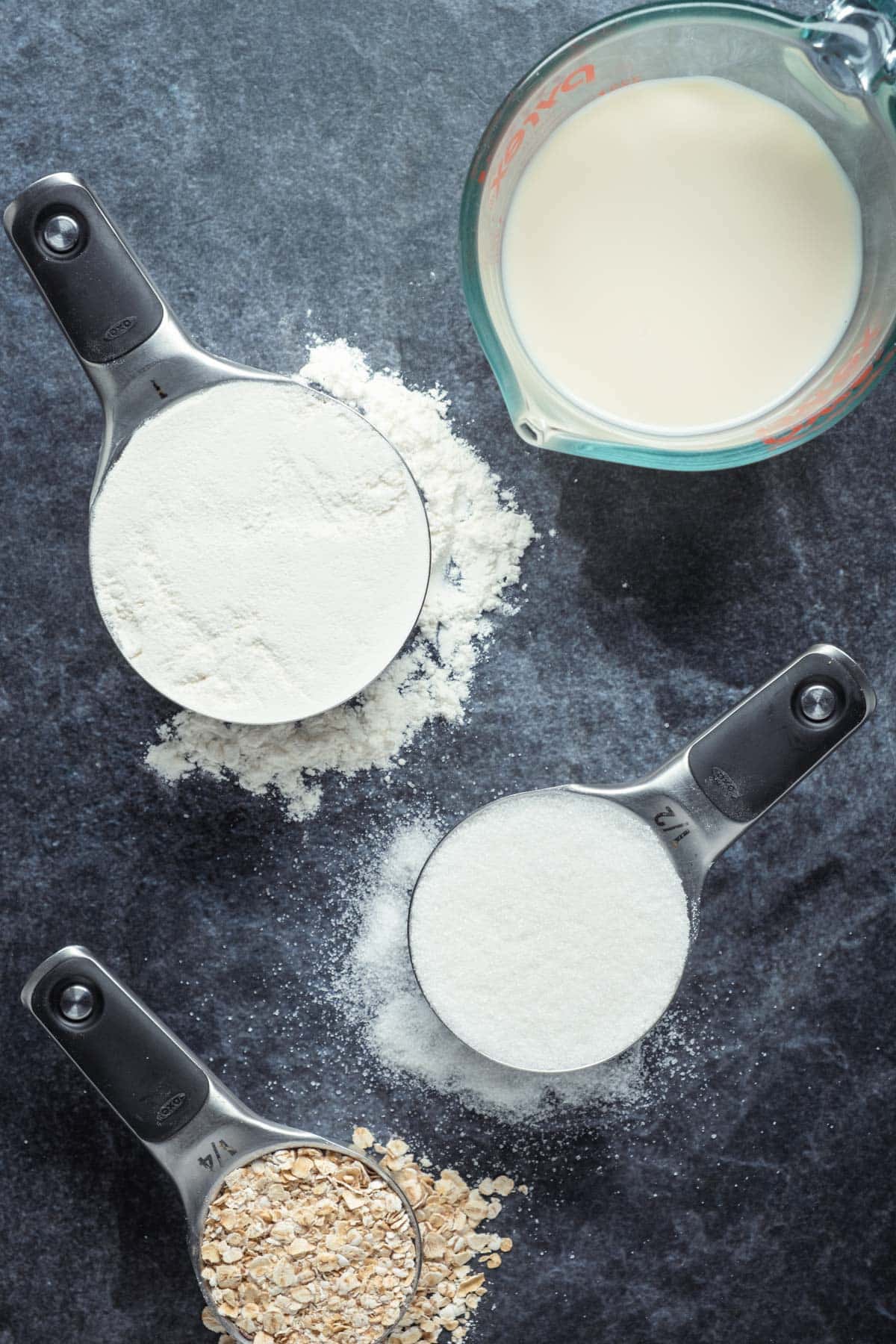
‘How many ounces in a cup?’ is a question that my readers often ask. When you’re in the kitchen baking and you need to convert tablespoons into cups or ounces into cups, you need a quick answer – one that doesn’t involve using your phone or laptop with your flour-covered hands.
This guide will help you figure out ounces in a cup with ease. Best of all, it comes with a conversion chart so you can feel confident in the kitchen no matter what recipe you’re following.
Before I get into the nitty gritty of how many ounces in a cup there are, here’s a quick look at the most common conversions:
- 1 cup = 8 fluid ounces = 16 tablespoons
- ¾ cup = 6 fluid ounces = 12 tablespoons
- ½ cup = 4 fluid ounces = 8 tablespoons
- ¼ cup = 2 fluid ounces = 4 tablespoons
Remember that many recipes use the abbreviation of fluid ounces = fl. oz.
How Many Ounces In A Cup: Liquid vs Dry
When trying to work out how many ounces are in a cup, the first thing to note is whether you’re measuring fluid or dry ingredients. Liquid and dry ingredients measure differently.
Dry ingredients are typically measured by weight, for example, a cup of flour equals 4.4 ounces (oz.).
There is a big difference between fluid and dry ounces, so always check your recipe to make sure you have the right measurement.
Then there’s the issue that stems from the fact that all ingredients are not equal. For example, a cup of sugar weighs more than a cup of flour, but they are the same volume (both are 1 cup).
Measuring Liquids:
Liquids are measured by fluid ounces (the volume of the liquid), so for example a cup of liquid equals 8 fluid ounces (fl. oz) or 240ml. Liquid ingredients: oil, broth, water, maple syrup, lemon juice etc, do not need to be weighed, as they are only measured by volume.
Measuring Equipment:
Whether you’re a chef or a home cook, you’re bound to have some equipment you use to measure ingredients. But measuring equipment is different for wet and dry ingredients. This means that you need to have all the following measuring tools so that you can measure your wet and dry ingredients accurately.
Measuring cups measure dry ingredients like flour, sugar, oats. These allow you to level off the excess with a knife to get the exact quantity required (“spoon and level”).
Liquids such as oil, water, broth are usually measured with a liquid measuring cup (I call it a measuring jug, because it’s literally like a jug). A measuring jug is typically made of glass or plastic and clearly displays cups, ounces and millilitres along the side.
You can get an exact measurement by filling your measuring jug to the desired amount and then bringing it to your eye level to ‘calibrate’ it (ensuring it’s on the correct line).
Liquid measuring jugs often come in one, two, or four cup measures – or as a set of these. They usually come with a pouring spout so you can pour without spillage.
Measuring spoons are used to measure both wet or dry to get a tablespoon or teaspoon amount. See our post: how many teaspoons in a tablespoon.
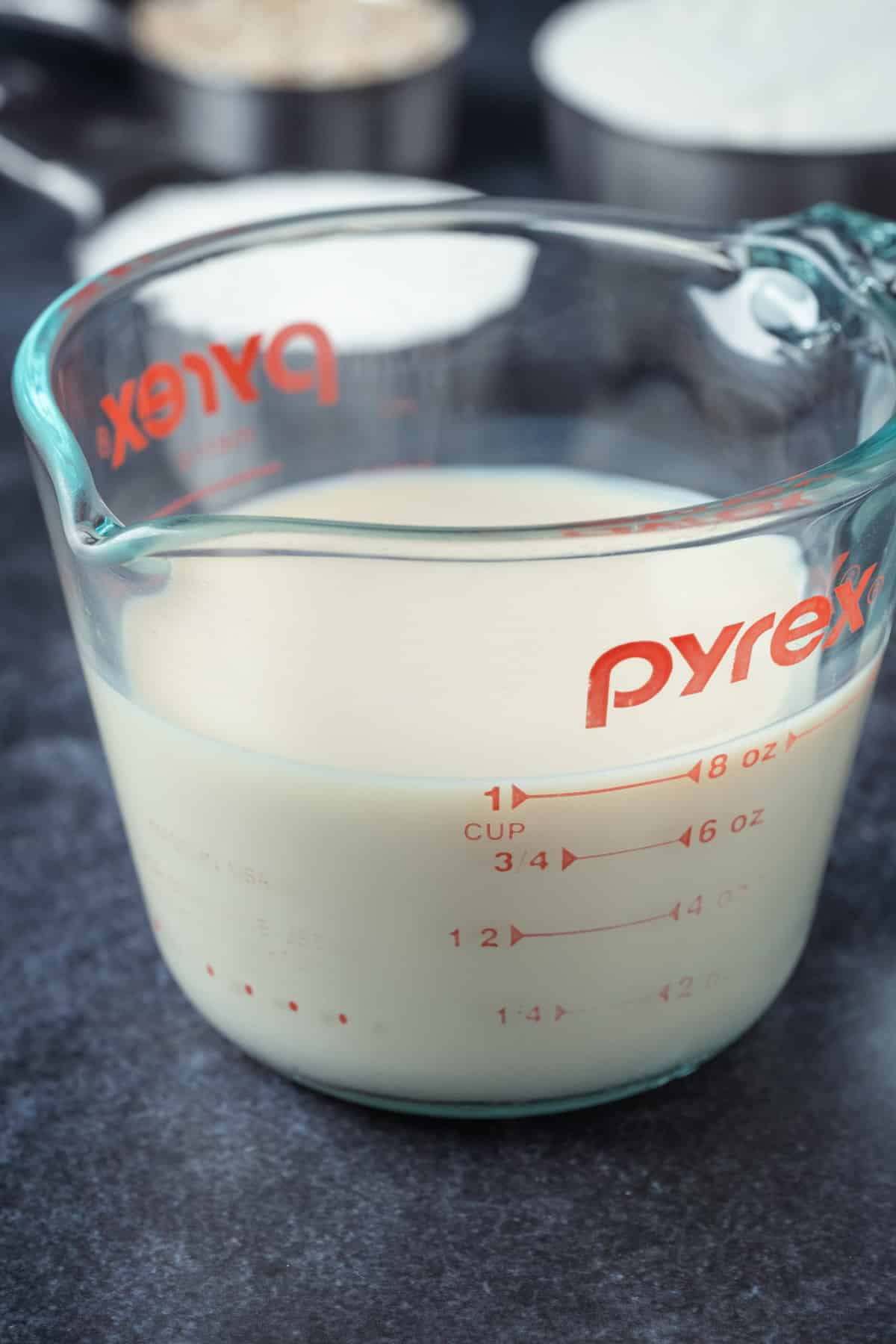
Not All Measuring Cups Are The Same Size
Measuring cups are sized differently depending on where you live. Using a differently sized measuring cup can have huge consequences for your baked recipe, because single ingredients must be added in exactly the correct quantity.
The UK and America have different cup and ounce measurements because they use different systems of measurement. In the UK (and pretty much everywhere else in the world), the metric system is the standard system of measurement. In the United States, everyone uses the imperial system.
So, what does this mean for cup sizes?
- 1 UK cup (metric) = 250 ml
- 1 US cup (imperial system) = 240 ml
Chef’s Tip: Make sure that your recipe comes out perfectly by first checking to see if the author is using the metric or imperial measurement system. Then make sure that you accurately measure your ingredients. Use the “spoon and level” method to measure your flour. Spoon the flour into your measuring cup and then level it off with a knife. Don’t scoop the flour and don’t pack it into your cup. To be extra-sure, use a food scale.
It’s not always easy to get a recipe right, especially when baking! Knowing how many ounces in a cup there are and keeping your conversion chart handy is the best way to guarantee flop-free results, whether you’re converting measurements from metric to imperial or vice versa, or one unit to another.
Conversion Chart – Dry Ingredients
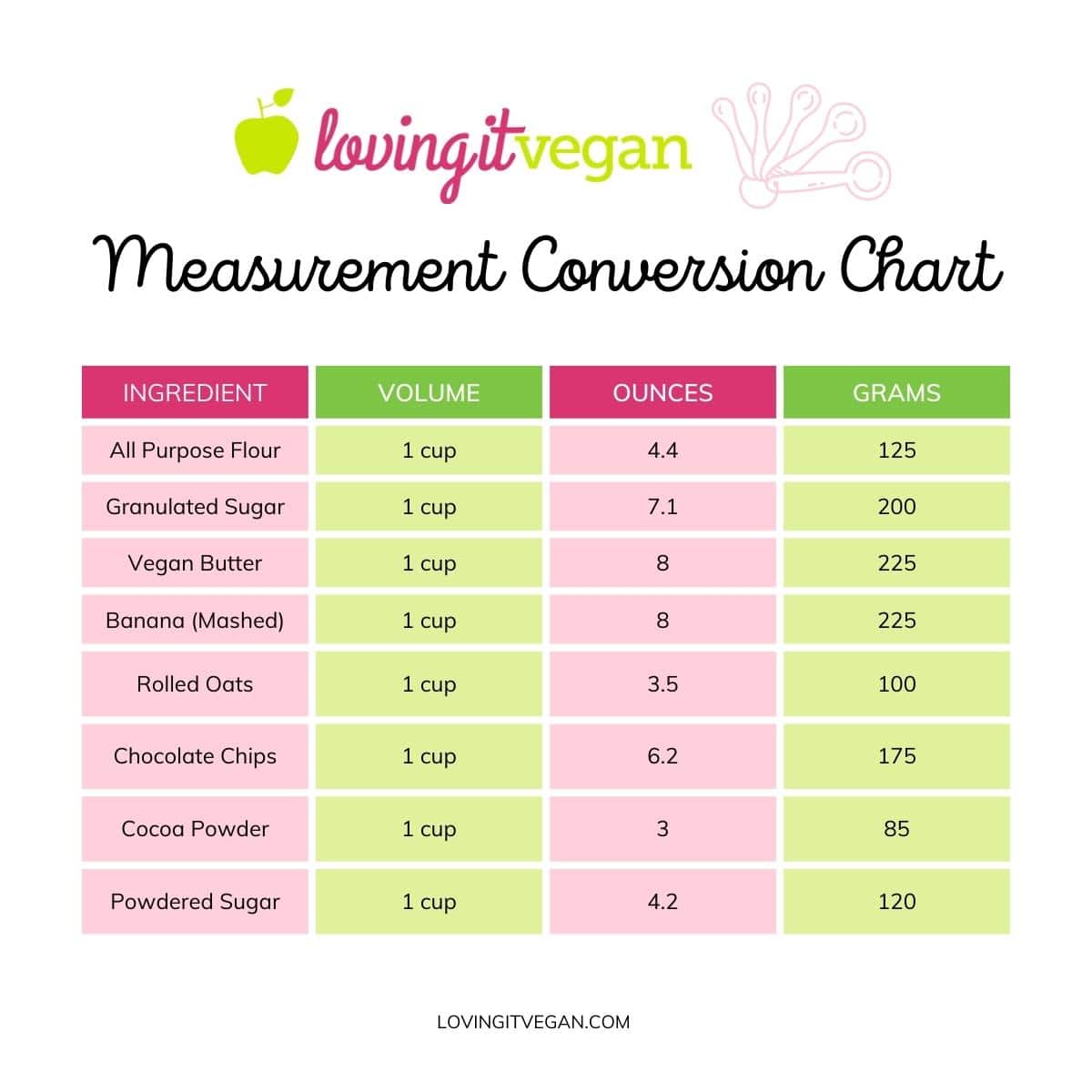
Frequently Asked Questions
Yes, 2 tablespoons are equal to one fluid ounce.
There are four fluid ounces in half a cup.
There are two tablespoons in a fluid ounce shot. So, if you’re making a cocktail or using a recipe that calls for an ounce of liquor and you don’t have a shot glass around, measure out two tablespoons of the alcohol instead.
A cup of butter, measured when solid, contains eight ounces of butter.
2 fluid ounces make a quarter cup.
To get the best result in baking, you need to be extremely precise. If a recipe tells you to “spoon and level” the flour, this means you need to add spoons of flour to the measuring cup until it’s full (don’t pack it into the cup) and then use the back of a knife to level off the excess, ensuring that the flour is level to the surface of the cup.
If a recipe calls for a packed cup, then you would need to add the ingredient to the measuring cup and press down on it to make space for more, thereby packing it into the cup.
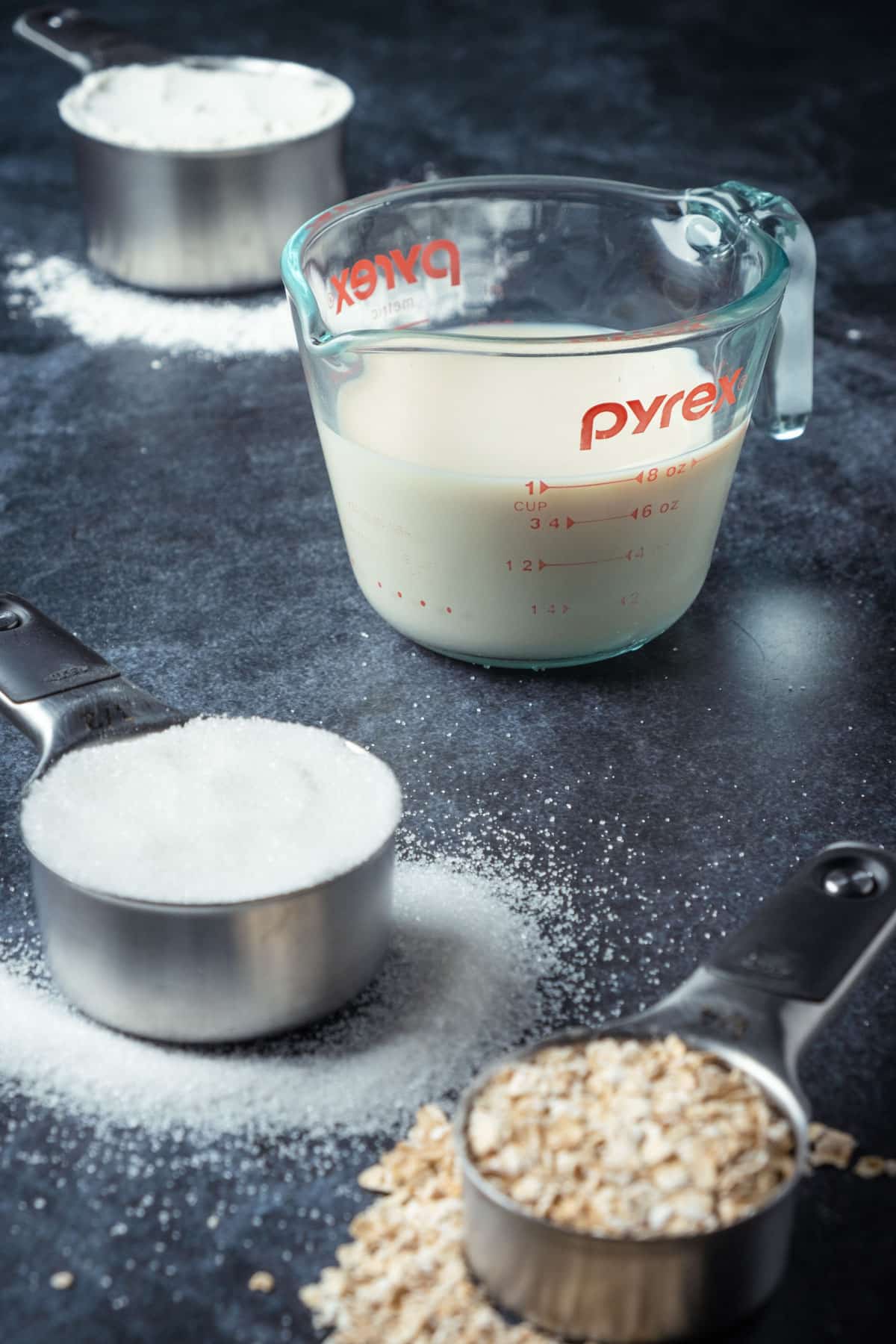
Recommended Equipment
We love these items for measuring and this is what we use in our kitchen:
- Oxo Good Grips 4 Piece Stainless Steel Measuring Cups
- Pyrex 3 Piece Measuring Jug Set
- Oxo Good Grips Food Scale
- U-Taste Stainless Steel Measuring Spoons

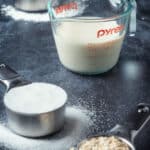

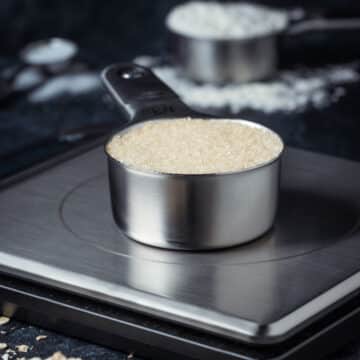
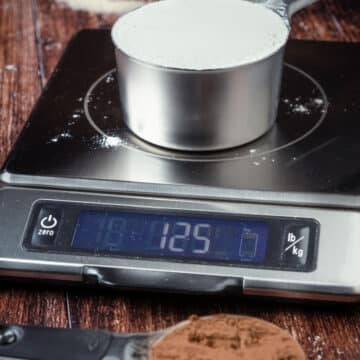
Leave A Comment & Review